Excerpts from Jim Conrad's
Naturalist Newsletter
from the February 21, 2010 Newsletter issued from Hacienda Chichen Resort beside Chichén Itzá Ruins, central Yucatán, MÉXICO; limestone bedrock, elevation ~39m (~128ft), ~N20.676°, ~W88.569°
A PRETTY MAT OF CALLISIA
In parklike areas where the soil is so thin that flat, white limestone bedrock emerges over large areas, nowadays often you find dense mats of the little, white-blossomed, three-petaled perennial shown below:
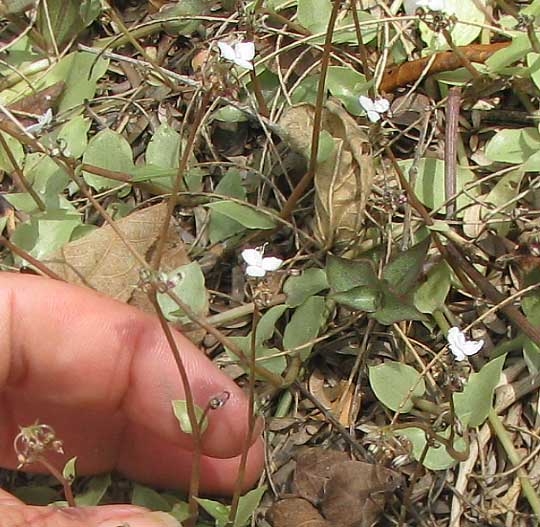
That's CALLISIA CORDIFOLIA, usually referred to as Callisia in English, a member of the Spiderwort Family, the Commelinaceae. You can see a close-up of a flower with its six stamens below:
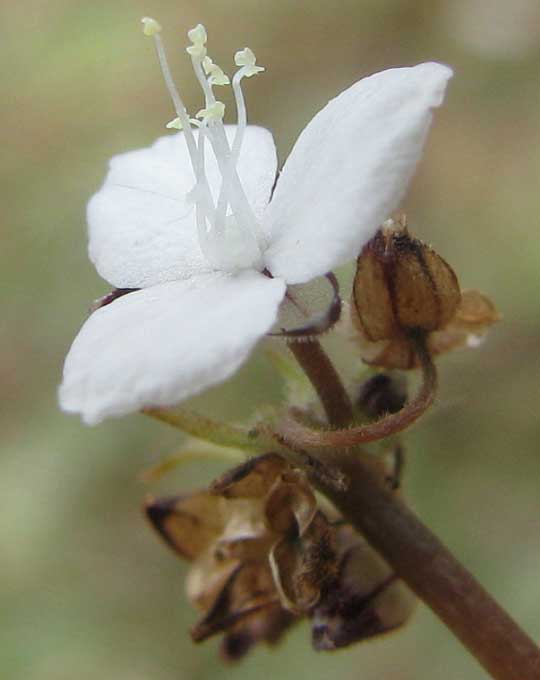
This flower is similar to a spiderwort flower (genus Tradescantia), and in fact formerly some botanists placed our species in that genus. You can compare the above picture with the North's Zigzag Spiderwort at www.backyardnature.net/n/h/spiderwo.htm.
An important difference between the two plant types is that spiderwort flowers are immediately subtended by large, leaf-like bracts, thus looking "stemless" on the plants, while in the photo you can see that Callisia flowers are held on a slender stem (the pedicel), and that the pedicels themselves arise from a larger stem (the peduncle). Also Callisias are much smaller than Tradescantias, the flower in the photo is less than 1/5th inch across (5 mm). A pretty distinction of our species' flowers is that the three sepals arising below the much larger petals bear striking color markings you'd never see if you weren't on your belly looking up from below them, shown below:
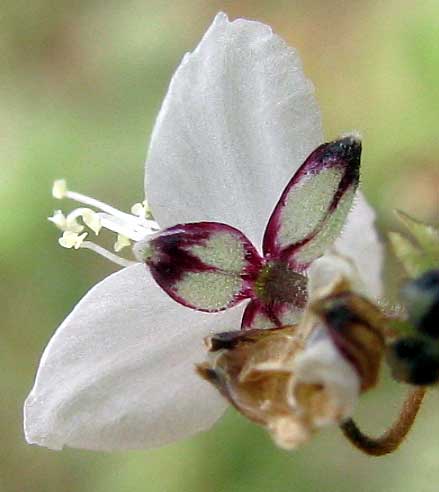
So, earlier we had the pleasure of "variations on a dayflower theme." With Callisia we have "variations on a Spiderwort-Family theme." Here we see how within a family the genera can sort themselves out not with the subtle features that distinguish species, but with grosser, more fundamental differences, such as whether large bracts are present below an inflorescence.
The genus Callisia, with its center of evolution here in Mexico, comprises about 20 species, of which seven make it into the Southeastern US. Our Callisia cordifolia occurs from Mexico and Florida south to northern South America.
from the February 4, 2018 Newsletter issued from Rancho Regensis north of Valladolid, Yucatán, MÉXICO;
elevation ~40m (~130 ft), N~20.876°, W~88.170°
CALLISIA UP CLOSE
Some weeks ago a doctoral candidate in the Botany Department at the University of São Paulo, Brazil wrote explaining that he was studying a group of species to which our Callisia cordifolia belongs, and asking if he could use the photos appearing on our Callisia page. Also, if at all possible, could I provide high resolution pictures, and maybe pictures showing details not clearly depicted in the pictures already posted?
I always try to help folks like this because it's fun to do so. A small population of Callisia cordifolia was found on the rancho not far from my hut, it was in full flower, and high resolution photos were sent, per his specifications. The new photos show more details than my earlier pictures, so now I'm adding them to the page, in the medium resolution appropriate for viewing on computer screens.
First, a habitat picture was taken, showing how to pollinators the plant's tiny, white blossoms show up so well in their typical shaded environment. Below, you can see the population growing over a north-facing bank along a trail, in deep shade beneath a tree:
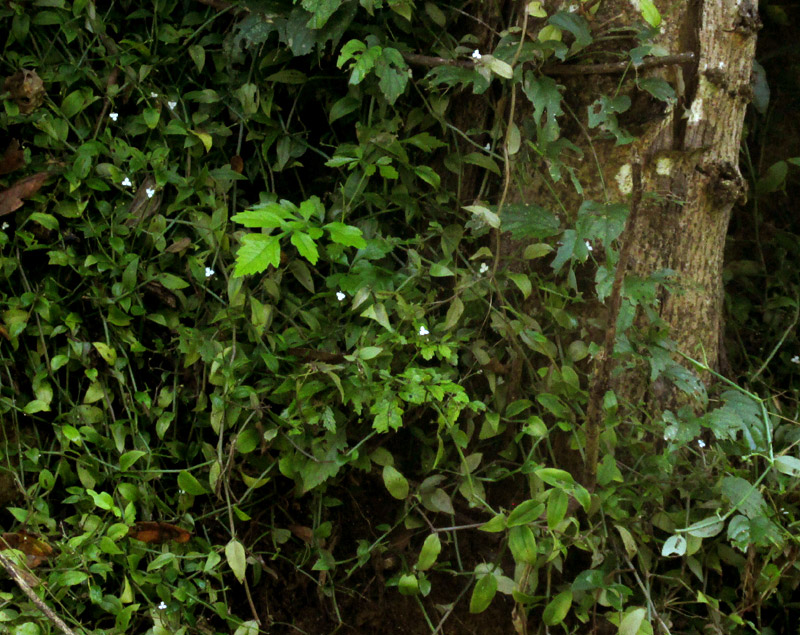
Flowers arise at the tips of offshoots from the main stem, which crawls atop the ground, as shown below:
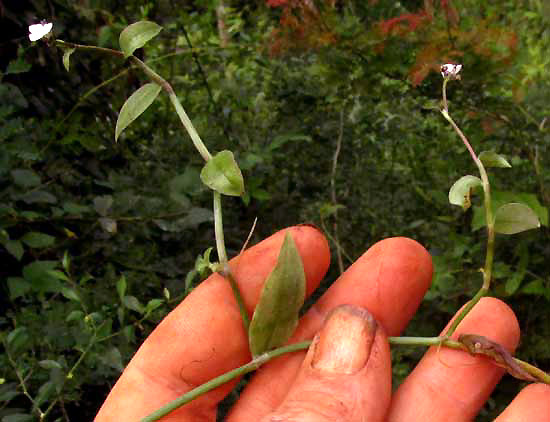
A clear idea of how the flowers arrange themselves at shoot tips is provided below:
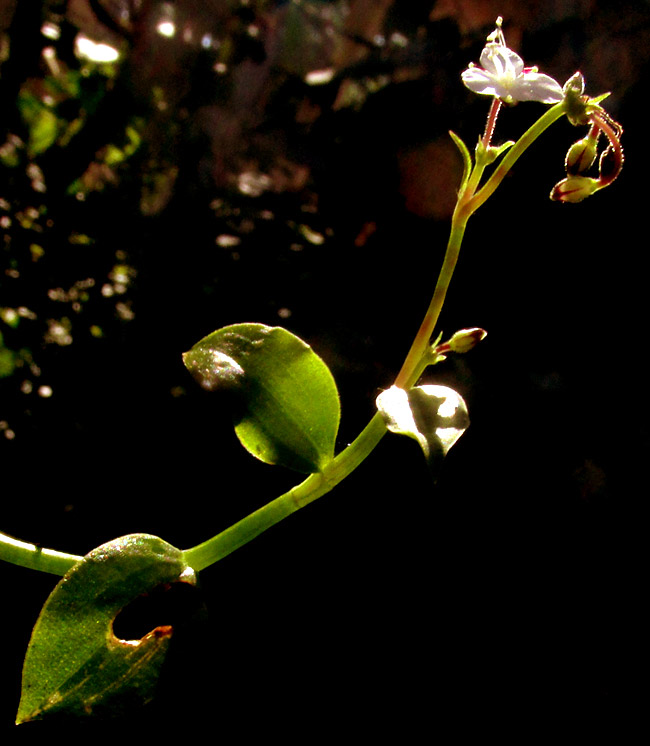
In terms of plant taxonomy, no feature of a species is more important than flower structure. Therefore, the flower was portrayed from different views. From the front, our bank-slope Callisia's flower shows the three petals typical of the Spiderwort Family, and a little surprise: The stamens bend strongly away from the central axis, maybe to provide a kind of landing platform for pollinators, as shown below:
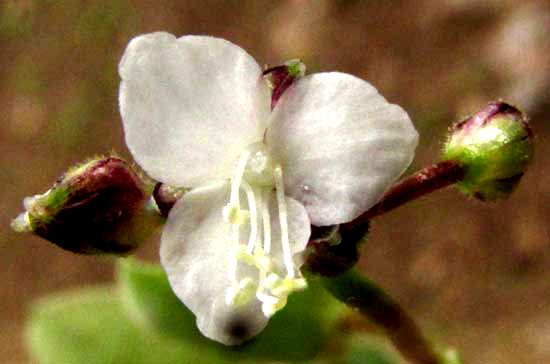
From the side it's easier to see not only how strongly deflected the stamens are, but also that the white, oval ovary in the blossom's center narrows to a definite style at the top, and the style is capped with a flattish stigma, as seen below:
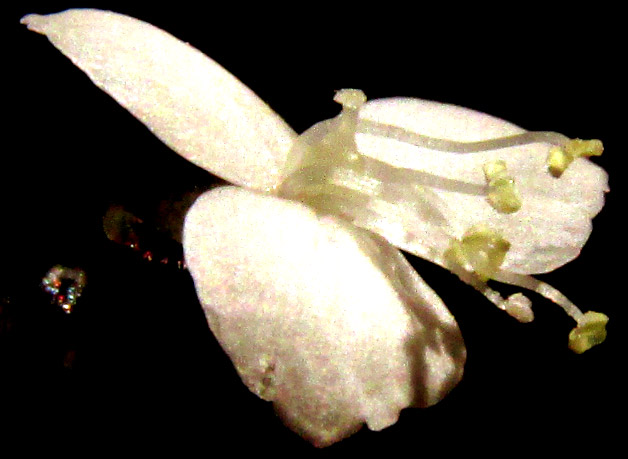
Below the petals, the three sepals are pleasingly ornamented with purple margins, as seen below:
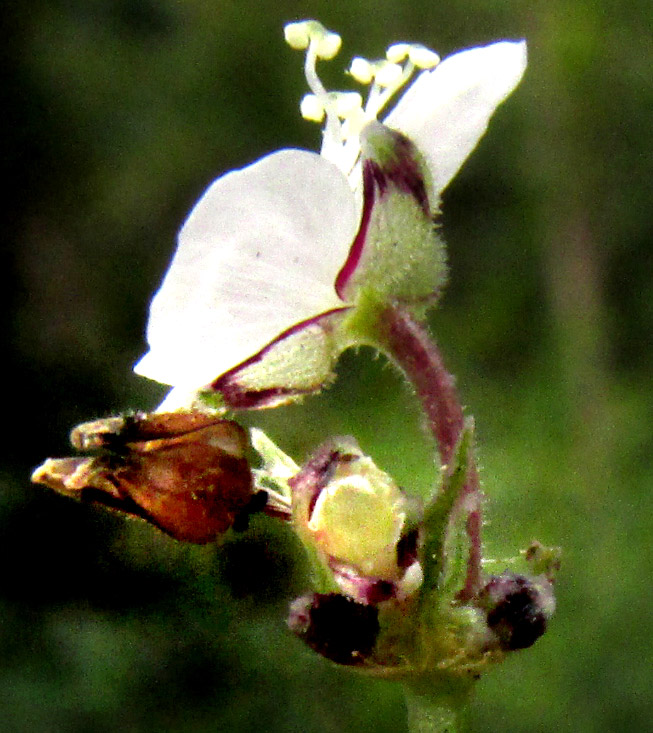
Often in the Spiderwort Family clusters of flowers arise from cuplike structures constructed of grown-together modified leaves, called bracts. That seems to be the case with Callisia, too, as shown below:
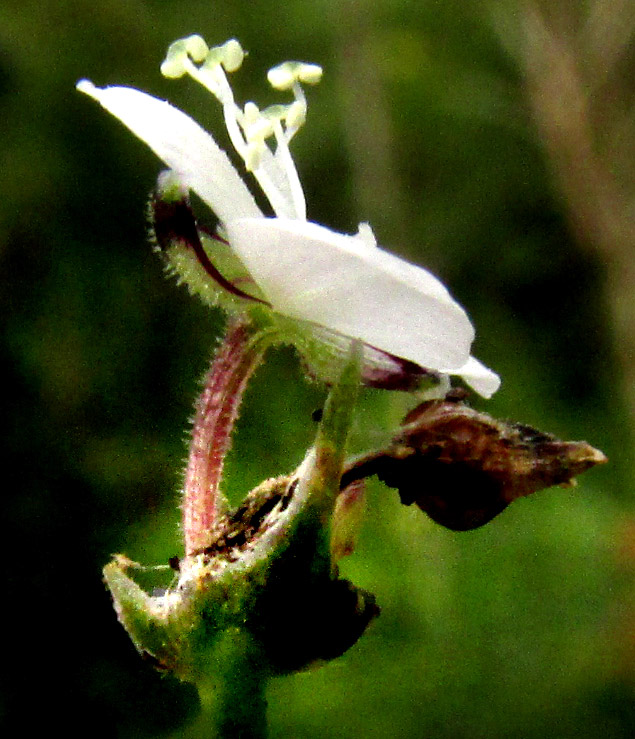
Species in the Spiderwort Family produce capsular-type fruits, a capsule being a dry fruit divided inside into two or more compartments called carpels, and usually at maturity the capsules split along one or more "lines of dehiscence." A semitransparent fruit with purple lines of dehiscence, with at least one seed clearly visible is shown below:
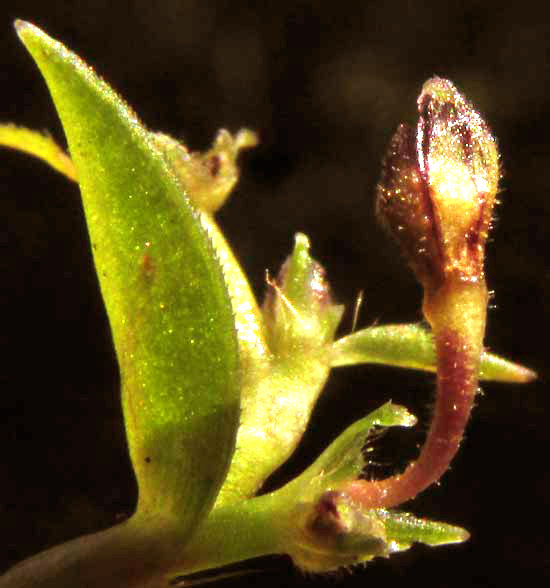
In that picture's center, note the immature ovary around which the petals and stamens have fallen away after pollination. A split-open capsule with its two or three seeds already ejected is shown below:
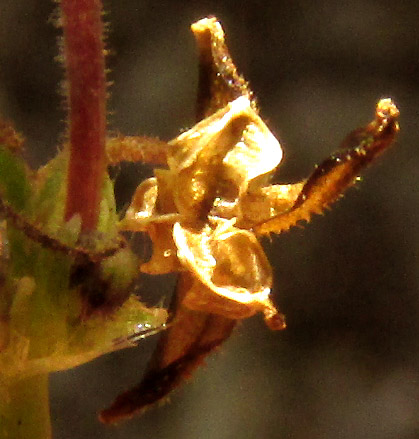
I'm grateful to my new friend in São Paulo, for encouraging me to take a closer look at this species, and see details I'd overlooked before. It's like everything else in life, the more you pay attention, the more interesting and beautiful it all gets.